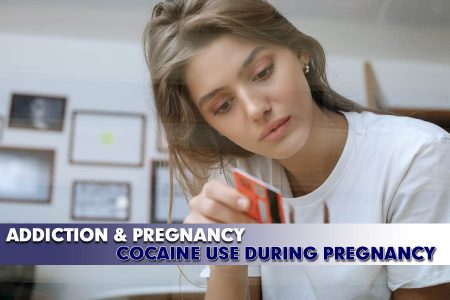Heroin Addiction Rehabilitation
Heroin (also known as diamorphine) is an illegal opioid that is very dangerous and highly addictive. It belongs to the opioid family of drugs.
The drug is a semi-synthetic opioid, that is made from morphine that has been chemically processed. The result is that the drug enters the brain quickly and produces a more immediate effect.

CALL OUR TOLL FREE HELP LINE NOW 855 885 5805
Symptoms & Diagnosis
The signs and symptoms of Heroin use and addiction will vary from person to person. Variance is often due individual genetic makeup, amount of drug used, frequency, and level of dependency of the drug. Some of the most common symptoms include:
- Agitation and irritability
- Euphoria (during immediate use only)
- Mood swings, hallucinations, disorientation, and delusions.
- Anxiety, and Paranoia
- Hostility towards other
- Agitation and irritability
- Weight loss
- Scabs, or bruises (result of picking at the skin)
- Frequent respiratory infections and shortness of breath
- Constricted pupils
- Nausea and vomiting
Heroin is also known as junk, H, horse, smack, skag, dope, and China white.
Heroin is part of the opioid family of drugs, that include synthetic, semi-synthetic, and natural opioids. Heroin falls under the class of semi-synthetic in the sense that it is made from morphine, a natural opioid, that has been chemically processed. The processed version enters the brain at a higher efficacy and produces a more immediate effect.
Common ways of heroin use include:
- Mainlining, Intravenous or IV injection into muscle or under the skin.
- Intranasal administration / snorting the powder / sniffing
- Inhaling or smoking / gently heating the heroin substance.
What does it look like?
In its pure form heroin resembles a fine, white, bitter-tasting powder that is soluable in water. When found on the street, it’s colour and consistency will have a large amount of variance due to differing purity levels.
Addiction & Risks
Regular use of heroin can quickly lead to addiction, usually within one to three weeks. The drug is dangerous for a number of reasons. The most immediate is from overdosing. In an opioid overdose, breathing tends to slow down and may cease completely. Signs that a person has overdosed is unconscious has skin that is cold, moist, and discolored (blue like color). To tempoarily reverse the effects of an overdose, a naloxone kit is used.
Call now for support
1 - 855 885 5805
For treatment or support, we’re only a phone call away. Our professionals are available to help around the clock.
Treatment Program
- Supervised Medical Detox process
- Relapse prevention workshops
- Group, individual, and family counseling
- Contingency management education
- Cognitive behavioral therapy
- Life management courses
- Meditation and yoga therapy
- Nutrition and physical fitness
- Recreational activities
- Personal training
Why Professional Treatment for Heroin Addiction is Necessary
The withdrawal process that occurs when a person is no longer taking heroin includes a number of serious health risks that need to be monitored in a professional and medically supervised detox. In some cases, withdrawal can be fatal, which is why a medical supervised setting is required. It is not recommended to try and detox alone, at home. Canadian Addiction Rehab offers professional and supervised detox to help ensure that your withdrawal from heroin is comfortable and safe.
The main risk of fatality during heroin withdrawal occurs due to the chance of relapse. As the body withdraws from the substance, their tolerance level lowers. As a result, the doses needed to get high is also reduced. Most addicts do not account for this, which means if the relapse, they may wind up overdosing.
Our centre has helped clients from all around the world. Each treatment programs is specific to the needs of the individual. We offer a holistic approach to overcome addiction by using strategies that support the whole person.
How to Get Professional Assistance for a Heroin Addiction
If you or a loved one are suffering from a heroin addiction, you need to contact us today. At Canadian Addiction Rehab, we offer support with interventions and help groups or individuals to plan and execute this. Addicts who refuse to seek or to accept help may need an intervention.
What is heroin addiction?
Heroin is an extremely addictive, illegal drug that has become a world wild epidemic. There are millions of addicts all around the world who use this drug on a daily basis and are unable to overcome the cravings and are terrified of the withdrawal they face. Heroin is able to be injected, smoked, or inhaled. It’s affects are felt immediately, which contributes to the addictive nature and the danger the substance poses. An addiction to heroin is characterized by an uncontrollable drug-seeking craving to get a “fix,” without regard for consequences. An addiction to heroin is a type of opiate addiction.
When someone takes heroin, it creates what users call a “chilled” effect. This becomes a sense of euphoria for a few minutes, which is followed by several hours of extreme drowsiness. Taking heroin also blocks a person’s ability to perceive pain. In some cases, the withdrawal from heroin can be extremely painful as the body has become chemically dependent. Continued heroin use can quickly destroy the person’s immune system and will leave the person thin because they don’t eat, constantly ill, and if the addiction is not treated it could lead to death.
Learn more
Make an Appointment
Call Now for Support
1 855 885 5805
For treatment or support, we’re only a phone call away. Our professionals are available to help around the clock.







